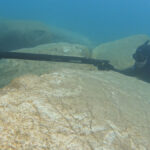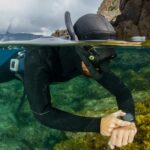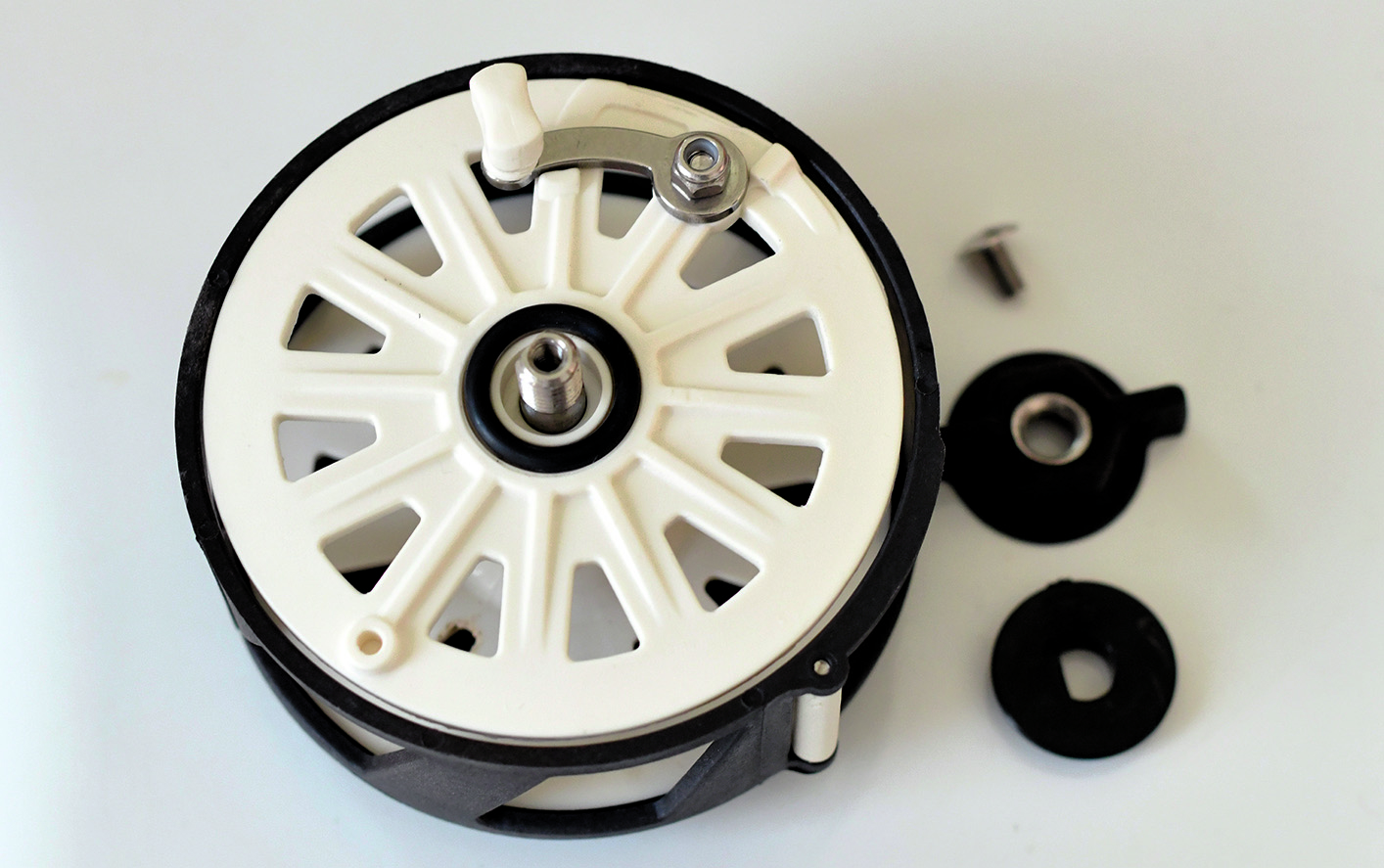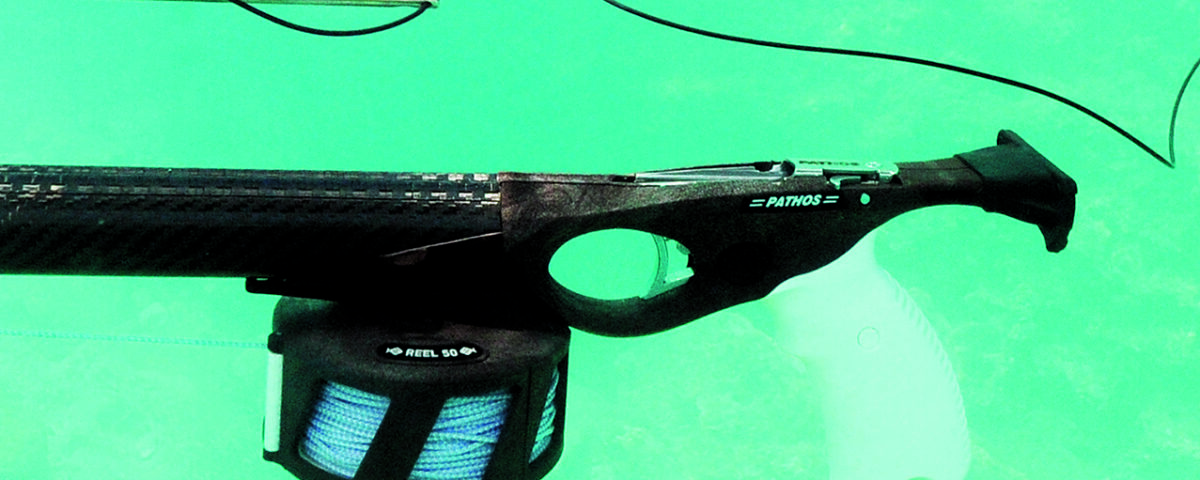PATHOS: Reel Evo 40 and 50 Reels

CRESSI: Victory 100
22 July 2024
Garmin: Descent™ Mk3
22 July 2024Two excellent products, very sturdy and well-made, with the highlight being the drag system, which locks with just three-quarters of a turn: really quick!
Emanuele Zara
Pathos has developed a new series of light and compact reels, the Reel Evo 2024. These are interesting products and worthy companions for the company's spearguns, models that operate horizontally with some truly noteworthy features. It is immediately evident that they were designed by those who go to sea, with a focus on functionality over frills.
I received the Reel Evo 40 and 50 from Giacomo De Mola, which differ only in terms of size, spool capacity, and drag knob. I carefully disassembled them to understand their construction, quality details, and then mounted them respectively on a Pathos Saragos Evo Carbon and a Laser Evo to test them at sea.
The catalog includes two versions of the Reel Evo 50 and one of the Reel Evo 40, distinguishable by the color of the external casing, which for the 50 version is available in three colors: brown, gray, and black.
The central pin is made of stainless steel and is attached to the externally discharged casing, which is molded in reinforced polymer; it is a recycled and recyclable piece. By removing the drag package and then extracting the skeletonized spool, you can see the stainless steel shaft with a partially embedded "spider" base in the polymer and two lateral holes. Through these two openings, the included long stainless steel screws can be inserted, replacing the original short ones, and then fixing the body to the speargun's barrel.
The accessory, a semi-shell equipped with a crocodile line clip, lowered wings, and a slide for the external frame’s female part, constitutes the intermediate element between the reel and the barrel. Once the external casing is fixed to the weapon, practically tangential to the handle, you realize that the system is firmly anchored to the gun, whether it is made of carbon or aluminum.
The inner ring on the spool, which has a through-hole for tying the line, is useful and functional, allowing you to start winding without wasting time. The drag system allows you to open or close it with just a single (not even complete) rotation; it’s really quick to adjust.
On the Evo 40, the knob is cylindrical, while on the 50 it is helical, making it even more comfortable to handle. Lastly, it is worth noting the new extendable winding arm, made of stainless steel: the knob rotates, and in the rest position, the arm can be repositioned and locked thanks to the surface ridges on the spool, making it very convenient for use at sea. Additionally, an important added value is that Pathos has all the spare parts for these reels in their catalog, so if a component breaks or gets lost, it can be easily replaced.
To proceed with the assembly, you need two screwdrivers, one with a flat head and one with a cross head. The reels are disassembled by first unscrewing the visible screw inside the drag control. The wide-head screw has a short thread, and once removed, the drag knob is completely unscrewed, and the plastic bushing resting on an O-ring embedded in the spool's circular seat is then removed. After removing the drag parts, the spool is extracted, leaving only the casing in hand.
At this point, take the speargun and use the cross-head screwdriver to remove the two screws holding the original model. It's a polymer sleeve that houses the crocodile line clip at the front, the side wings to keep the line passes tidy and close to the gun, and the male guide below for the female insert on the external frame of the Reel Evo. It is held in place by two cross-head stainless steel screws: unscrew them, and the plastic support is removed. Be careful when handling the piece as the pointed sides can prick your fingers if you're not careful. At this point, insert the casing into the slide, and once the holes are aligned with those of the barrel, insert the longer screws included with the reels and screw everything back together.
When reassembling the spool, you can appreciate the internal line pass seat and naturally tie the line to set up the spearguns. I wind 1.5 mm Dyneema and fill the reels almost to the edge; the casing prevents the coils from coming out. I go out with my friend Gianluca, and we exchange weapons during the hunt. The reels are compact enough and do not offer much resistance during maneuvering.
I shoot a mullet, and the drag, purposely left slightly loose, automatically lets out the line. The fish struggles, but I reach it and put it on the stringer. The line is slack, and I marked it with a pen to know exactly where it comes out of the spool. While rewinding a few excess meters using the extendable arm, I appreciate the ease with which I spool the Dyneema.
Gianluca, with the Laser Evo, shot a seabream hiding under a rock and came back up. He explains that he left the fish under the slab, not well hit, and came up vertically, letting out the line. He was surprised by the drag adjustment; it was enough to loosen it slightly for the spool to unwind the line almost without friction. We perform more tests, and in all of them, the ease of managing the reels is appreciated.
In summary, the aspect that impressed me the most is the management and adjustment of the drag: it is sufficient to slightly loosen the control to release the line; conversely, if tightened, the line does not come out. Furthermore, even when pulling the line vigorously, there are no tangles, which is a safety feature in case you retrieve a catch that puts the angler to the test.
Ratings
Build Quality: 8.5 The new Reel Evo are really well made. The central pin, recovery arm, and screws are made of stainless steel, the outer body and spool molded in polymer
Ergonomics: 8 The outer casing is smooth and robust, effectively preventing the line from escaping the inner spool; the extendable winding arm with knob retracts within the height of the drag control
Management: 8.5 They are relatively easy to assemble, though it takes some time; excellent little hole to insert the line on the spool; the casing acts as a line containment and anti-tangle mechanism, aided by a vertical guide cylinder; the extendable arms are very convenient, and the drag control can be operated with less than a full rotation
Value for Money: 7.5 Priced at 45 and 40 €, plus store discounts
Pros
The drag can be engaged and tightened with just three-quarters of a turn: really quick
Effective and convenient extendable winding lever on the spool
Cons
Removing the semi-round support from the gun takes some time for assembly
Technical Sheet
Material: Outer casing and spool made of reinforced recycled polymer; central pin, screws, and extendable arm made of stainless steel.
Capacity: Reel Evo 50 holds over 60 meters of 1.5 mm line; Reel Evo 40 holds about 50 meters
Dimensions and Sizes: Reel Evo 50, 92 mm maximum diameter and 69 mm maximum height; Reel Evo 40, 70 mm maximum diameter and 69 mm maximum height
Material and Construction Technique
The new Reel Evo are designed and molded in Greece. They consist of an internal spool and an external casing, both significantly lightened by generous discharge slots. The skeletons are molded in reinforced polymer derived from recycled material and are recyclable at the end of the cycle. The external casing houses a 316L stainless steel pin, co-molded and firmly attached to the plastic structure via a stabilizing spider; it features a female slide on the outside, whose role is to encase the reel and prevent the line from escaping. An anti-tangle function is also aided by a white vertical rotating cylinder where the line rests upon exiting. The drag control, with a double wing for the Reel Evo 50 and cylindrical for the Reel Evo 40, is made of reinforced polymer and screws onto the central metal shaft, held in place by a stainless steel screw. The winding system relies on extendable arms that, in the rest position, are slightly held by ridges. The brackets are made of stainless steel and feature a rotating white knob.
Finishing Level
Overall, remarkable. The spool and casing are expertly molded, and despite the lightening achieved by numerous generous slots, they remain rigid and do not flex. The pin fixed inside the external casing is well planted in the polymer. The stainless steel parts are well-finished, with no sharp edges; for example, the corners of the extendable arms are rounded and smooth to the touch. Only the small nut that holds them in place may need checking, as it tends to loosen with use: it should be tightened well and possibly secured with a drop of thread-locking adhesive.
Accessories Included
The reels were delivered in transparent plastic bags. Inside, there was a small bag with two stainless steel Parker screws: they are slightly longer and replace those at the base of the barrels that hold the handle and the semi-circular element with the crocodile line clip, lateral line holding wings, and upper male slide. Once the original short screws are removed, the replacement is repositioned with the frame inserted into the slide, and everything is secured by screwing the kit screws back in.



